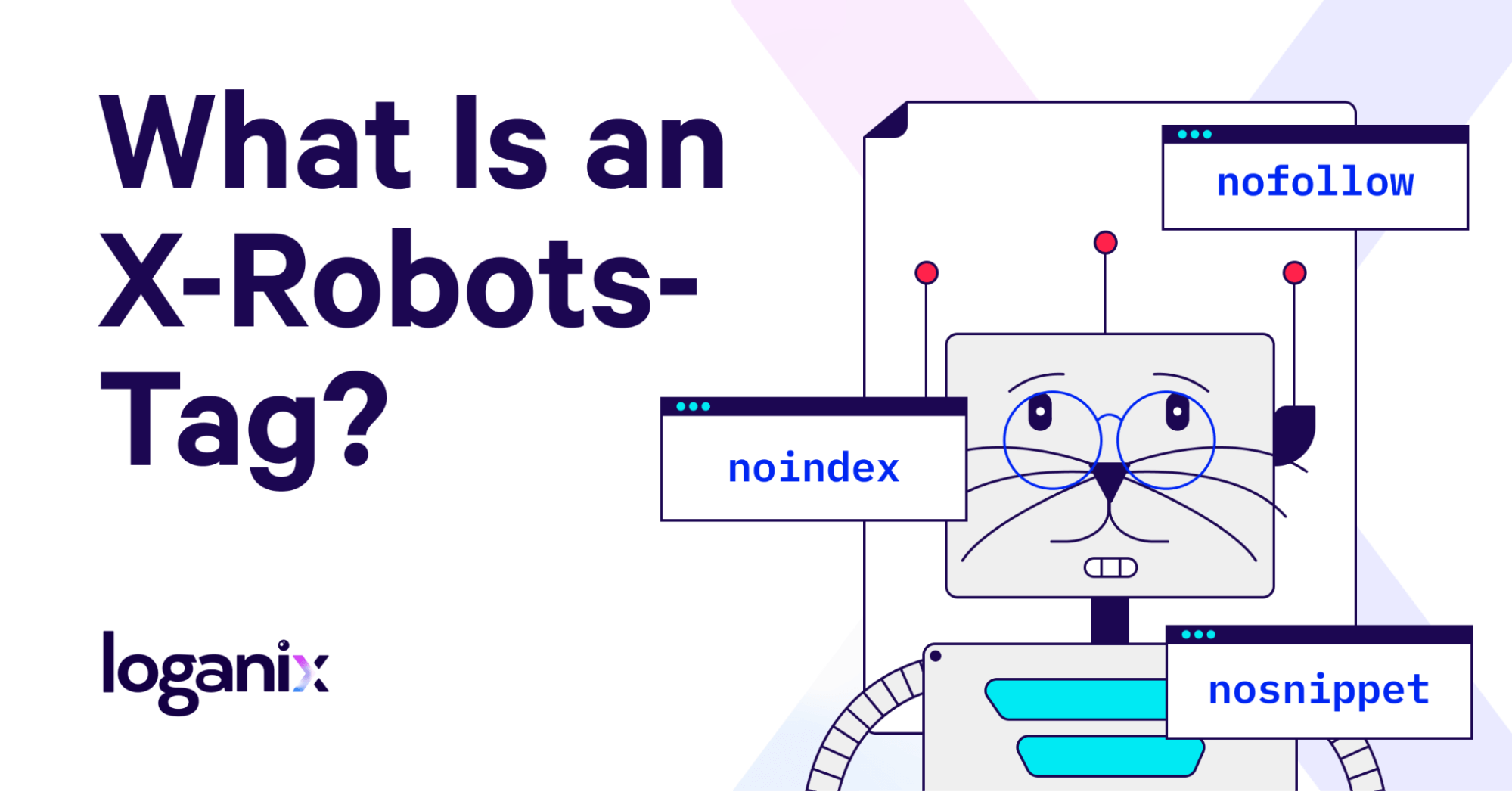What Is an X-Robots-Tag? Fine-Tune Crawling & Indexing

Hand off the toughest tasks in SEO, PPC, and content without compromising quality
Explore ServicesReady to crack the code and unlock the mysteries of the X-Robots-Tags? Let’s do it.
By the end of this read, you’ll be a pro at directing search engines on what to crawl and index. Here’s what I have in store for you:
- A straightforward, no-jargon explanation of “What is an X-Robots-Tags?”
- Insights into how X-Robots-Tags give you control beyond entire websites, allowing you to target specific files.
- I’ll also share some practical tips to maximize the use of X-Robots-Tags for better crawlability and indexing.
What Is an X-Robots-Tags?
The X-Robots-Tags, a component within HTTP response headers, allows webmasters to apply noindex, nofollow, and other robot meta directives across their websites, influencing how different aspects of a website are indexed and presented in search results. Standing out for its ease of use and versatility, X-Robots-Tag’s strength lies in its ability to manage not just HTML documents but also non-HTML elements such as PDFs and images.
Learn more: Interested in broadening your SEO knowledge even further? Check out our SEO glossary, where we’ve explained over 250+ terms.
X-Robots-Tags Real-World Examples 👇
Here are some real-world examples of HTTP responses with the X-Robots-Tag.
In this example, an HTTP response indicates that a PDF file should not be indexed or have its links followed by Google’s crawler (Googlebot):
HTTP/1.1 200 OK
Date: Wed, 20 Dec 2023 10:05:00 GMT
Content-Type: application/pdf
Content-Length: 12345
(…)
X-Robots-Tag: googlebot: noindex, nofollow
(…)
In this example, an HTTP response specifies that search engines should not index an image file, should not have a cached version stored, and should not have a text or image snippet displayed in search results:
HTTP/1.1 200 OK
Date: Wed, 20 Dec 2023 10:10:00 GMT
Content-Type: image/jpeg
Content-Length: 6789
(…)
X-Robots-Tag: noindex, noarchive, nosnippet
(…)
X-Robots-Tags vs. Robots Meta Tags vs. Robots.txt
So, what sets X-Robots-Tags apart from robots meta tags? And how do robots.txt files fit into the equation? Let’s explore the differences in the table below:
| Feature/Function | Robots.txt | Robots Meta Tags | X-Robots-Tags |
| Primary Use | Directs search engine bots on where they can and cannot crawl on the site. | Provides specific instructions to search engines on how to index individual pages. | Controls how specific file types are indexed and served in search results. |
| Location | A separate text file located in the root directory of the website. | Placed within the <head> section of an HTML document. | Included in the HTTP header response from the server. |
| Scope | Applies to the entire website but can specify individual directories or files. | Applies only to the individual HTML page where it is placed. | Can apply to both HTML and non-HTML files (e.g., PDFs, images). |
| Directives | Uses User-Agent, Allow, Disallow, and Sitemap directives for crawling. | Uses directives like noindex, nofollow, noarchive for indexing individual pages. | Similar to meta robots but can apply directives like noindex, nofollow to non-HTML content. |
| Crawl Control | Yes, controls which parts of the site can be crawled. | No direct control over crawling, only indexing. | No direct control over crawling, but can influence indexing of various file types. |
| Indexing Control | Does not directly control indexing, only crawling. | Directly controls whether a page should be indexed or not. | Controls how different file types are indexed and displayed in search results. |
| Influence on Search Engine Visibility | Indirect, by controlling access to content. | Direct, by controlling how individual pages are indexed. | Direct, especially for non-HTML content, influencing overall site indexing. |
The Importance of X-Robots-Tags in SEO

Let’s explore where the importance of X-Robots-Tags lies.
Flexibility and Scope
X-Robots-Tags stand out due to their ability to employ regular expressions, allowing for more nuanced and sophisticated directives. As we’ve discussed, unlike meta robots tags, which are confined to HTML documents, X-Robots-Tags can dictate indexing and crawling behaviors across a diverse range of file types.
Global and Scalable Application
Another significant advantage of X-Robots-Tags is their capacity for global, site-wide applications, making them an ideal choice for implementing directives at scale. For instance, if you need to deindex an entire subdomain or apply a specific rule to multiple web pages that match a certain parameter, X-Robots-Tags accomplish this feat efficiently, something that would be cumbersome with meta robots tags.
Enhanced Crawl Budget Management
Using X-Robots-Tags to prevent search engines from indexing irrelevant or low-value pages (like duplicate content or printer-friendly versions) ensures that search engine crawlers spend their time on the most important pages of your site. Something that’s particularly helpful for large websites with thousands of pages, where crawl budget optimization can directly impact SEO performance.
Improved Site Architecture and User Experience
Controlling which pages are indexed and which aren’t means X-Robots-Tags contribute to a cleaner site architecture. An advantage that not only makes it easier for search engines to understand and rank your site but also improves user experience by making sure that only the most relevant and valuable pages are displayed in search results.
Protection of Sensitive Content
X-Robots-Tags are invaluable for managing the visibility of sensitive or confidential content. For instance, if you have files or pages that should not be publicly accessible via search engines (like private PDFs or internal reports), these tags can prevent such content from appearing in search results, adding an extra layer of security.
Support for Advanced SEO Strategies
For websites employing advanced SEO strategies, such as A/B testing or personalized content, X-Robots-Tags can be used to control how these different versions are indexed. A handy way to avoid issues like duplicate content penalties and ensure that the most appropriate version of a page is presented in search results.
X-Robots-Tags FAQs
Q1: Can X-Robots-Tags Be Used to Target Specific User Agents?
Answer: X-Robots-Tags can be tailored to target specific user agents, like Googlebot or Bingbot, allowing for more customized control over how different search engines index and crawl your content. It’s an in-built feature that’s particularly useful for addressing the unique behaviors of various search engine crawlers.
Q2: Can X-Robots-Tags Control Crawling and Indexing Separately?
Answer: Yup, X-Robots-Tags can separately control crawling and indexing. They offer directives like “noindex” and “nofollow” to manage how search engines interact with your content.
Q3: How Do X-Robots-Tags Affect a Website’s SEO Performance?
Answer: X-Robots-Tags can significantly impact a website’s SEO performance by managing which pages are indexed and how they are presented in search results. Proper use of these tags helps ensure that search engines focus on high-value SEO content, enhancing the site’s overall search visibility and effectiveness.
Conclusion and Next Steps
You’re now clued into the ins and outs of X-Robots-Tags. But hey, knowing is half the battle. The real magic happens when you put this knowledge into action.
If you’re feeling pumped to boost your site’s SEO but aren’t quite sure where to start, don’t sweat it. Loganix has got your back.
🚀 Head over to our SEO services page and check out how we can take your site’s SEO to the next level. 🚀
Hand off the toughest tasks in SEO, PPC, and content without compromising quality
Explore ServicesWritten by Adam Steele on January 19, 2024
COO and Product Director at Loganix. Recovering SEO, now focused on the understanding how Loganix can make the work-lives of SEO and agency folks more enjoyable, and profitable. Writing from beautiful Vancouver, British Columbia.





